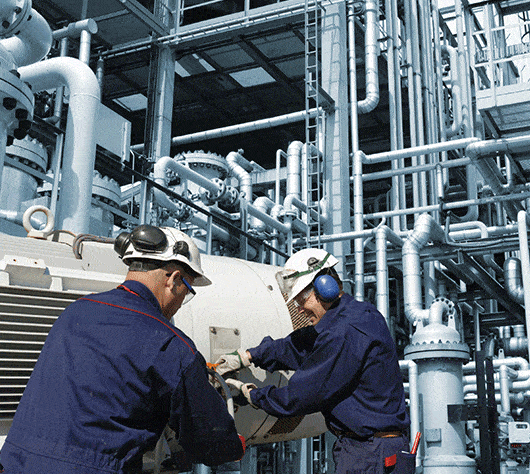Roar Solutions Fundamentals Explained
Roar Solutions Fundamentals Explained
Blog Article
The Only Guide to Roar Solutions
Table of ContentsWhat Does Roar Solutions Do?Not known Incorrect Statements About Roar Solutions Roar Solutions for Beginners
In such an ambience a fire or surge is possible when three basic problems are fulfilled. This is typically referred to as the "harmful area" or "combustion" triangle. In order to secure setups from a prospective surge a technique of analysing and classifying a possibly hazardous area is needed. The purpose of this is to make sure the proper selection and setup of devices to ultimately avoid an explosion and to make certain security of life.
(https://justpaste.it/8xypx)
No tools needs to be installed where the surface area temperature of the devices is above the ignition temperature of the offered threat. Below are some common dirt unsafe and their minimal ignition temperature level. Coal Dust 380C 225C Polythene 420C (thaws) Methyl Cellulose 420C 320C Starch 460C 435C Flour 490C 340C Sugar 490C 460C Grain Dirt 510C 300C Phenolic Material 530C > 450C Aluminium 590C > 450C PVC 700C > 450C Residue 810C 570C The likelihood of the risk being present in a focus high sufficient to cause an ignition will vary from place to location.
In order to categorize this threat an installment is divided into locations of risk relying on the amount of time the harmful exists. These areas are referred to as Zones. For gases and vapours and dirts and fibers there are 3 zones. Zone 0 Zone 20 A harmful environment is highly most likely to be existing and might be existing for long durations of time (> 1000 hours annually) or perhaps constantly Area 1 Area 21 A dangerous environment is possible however unlikely to be present for lengthy periods of time (> 10 450 C [842 F] A category of T6 means the minimum ignition temperature level is > 85 C [185 F] Unsafe location electrical equipment maybe made for use in higher ambient temperature levels. This would suggested on the rating plate e.g. EExe II C T3 Ta + 60C( This implies at 60C ambient T3 will not be exceeded) T1 T1, T2, T3, T4, T5, T6 T2 T2, T3, T4, T5, T6 T3 T3, T4, T5, T6 T4 T4, T5, T6 T5 T5, T6 T6 T6 A T Class score of T1 suggests the optimum surface temperature level created by the instrument at 40 C is 450 C. Thinking the linked T Class and Temperature level ranking for the equipment are ideal for the location, you can constantly use an instrument with a more strict Department ranking than required for the area. There isn't a clear solution to this concern sadly. It truly does rely on the kind of equipment and what repair work require to be performed. Devices with specific test procedures that can't be performed in the field in order to achieve/maintain 3rd party ranking. Should come back to the factory if it is prior to the equipment's solution. Area Repair By Authorised Personnel: Complicated screening may not be required however details treatments might need to be complied with in order for the tools to keep its 3rd event rating. Authorised personnel must be employed to perform the work correctly Repair must be a like for like substitute. New element should be thought about as a direct substitute calling for no unique testing of the equipment after the fixing is complete. Each tool with a hazardous score must be examined individually. These are outlined at a high degree below, but also for even more in-depth info, please refer directly to the standards.
9 Simple Techniques For Roar Solutions
The devices register is a comprehensive database of equipment records that consists of a minimum collection of areas to identify each thing's location, technical criteria, Ex category, age, and ecological data. The ratio of Thorough to Close evaluations will certainly be established by the Tools Danger, which is evaluated based on ignition risk (the probability of a resource of ignition versus the possibility of a combustible atmosphere )and the hazardous area classification
( Zone 0, 1, or 2). Carrying out a robust Risk-Based Assessment( RBI )technique is crucial for making sure Roar Solutions conformity and safety in taking care of Electric Tools in Hazardous Areas( EEHA).
What Does Roar Solutions Do?

In regards to eruptive risk, a hazardous location is an atmosphere in which an explosive environment exists (or might be expected to be existing) in quantities that call for special preventative measures for the building, setup and usage of tools. eeha certificate. In this post we explore the difficulties faced in the work environment, the danger control actions, and the called for expertises to work securely
These compounds can, in specific conditions, create explosive atmospheres and these can have major and awful consequences. Many of us are familiar with the fire triangle get rid of any one of the 3 aspects and the fire can not happen, however what does this mean in the context of harmful locations?
In the majority of instances, we can do little about the degrees of oxygen airborne, yet we can have substantial impact on resources of ignition, as an example electric tools. Unsafe areas are recorded on the unsafe area classification drawing and are identified on-site by the triangular "EX" indicator. Right here, amongst various other essential info, areas are split right into three types depending on the danger, the possibility and period that an eruptive ambience will exist; Zone 0 or 20 is deemed one of the most dangerous and Zone 2 or 22 is considered the least.
Report this page